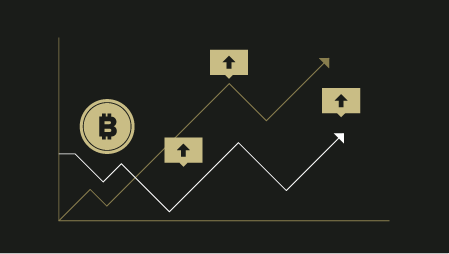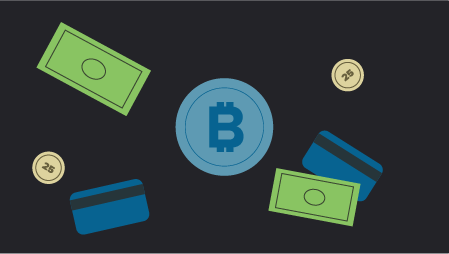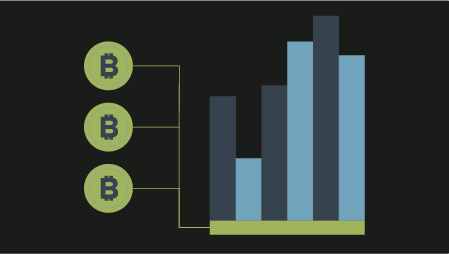Ready to learn Blockchain? Browse courses like Blockchain Technology Fundamentals developed by industry thought leaders and Experfy in Harvard Innovation Lab.
We are witnessing a paradigm shift regarding data. Not only is it becoming more valuable than currency, but the processing of data can even generate cyber-currencies. It goes without saying that data and related processes are currently experiencing a transformation, and quickly moving from centralized to distributed models.
What about the blockchain?
It’s been almost a decade since this word entered our vocabulary, and while most people still associate it with Bitcoin, it has grown tremendously since its early Satoshi days. In fact, it has evolved from a geeky curiosity to a corporate buzzword, plastered on any financing request to make it sound more interesting.
A blockchain is simply a ledger; or more simply, a timeline of operations which have been verified by the participants through a mathematical algorithm. This happens over a distributed network which ensures no participant or small group can overtake power. Once a block is added, after verification, it can’t be changed, thus providing long-term accountability and traceability of the operations.
The significant advantage of using blockchain comes from its decentralization. Through its public character, the blockchain also offers total transparency of the process.
Why predictive analysis?
The increasing velocity of business and the vast amounts of variables all require some way of keeping track and, most of all, demand a method of predicting the future. It’s not about historical reports anymore, organizations want to know what’s happening next and, if possible, execute it in real time. No-one waits for the end of quarter evaluation report anymore, it’s a matter of what happens in the morning dictating the actions for the same afternoon.
This is the territory of predictive analytics. This application of Big Data is an evolution of statistical methods which includes a lot more chaos by also using unstructured data. It’s about making sense of this chaos, not only the precise data set in a table.
Putting it together
These two concepts are both trendy, but is there any way they could work together? Is there any joint utility? In fact, predictive analytics experts from InData Labs state that the synergies created by putting these two forces together could change the world.
Predictive analytics, as an evolving domain based on Big Data and AI, requires a considerable amount of information for training the model. Sometimes, locally, this is scarce or unscalable, but imagine putting together data from thousands of similar users. Suddenly, the lack of data is no longer a problem and patterns emerge more easily.
This gives a real chance to smaller companies, like start-ups, to take advantage of the blockchain model for their operations and use the data generated in the process as a by-product to feed various prediction models. As the amount of data becomes sufficient, the predictions could be accurate enough to help the participants have better options for their businesses.
As an example, let us consider a recently opened flower shop. On their own, they wouldn’t have any idea of what their daily demand would be, the volumes necessary for peak days (i.e. Mother’s Day, Valentine’s Day, etc.) and current trends (red roses vs red carnations). However, imagine if all the flower shops in a country joined the same blockchain network and shared information about sales, vendors, client requirements or anything that might bring value to their respective businesses. This is the potential of blockchain.
Beyond numbers
Perhaps there’ll never be a ‘flower coin’, boosted by the need to predict peony demand, but we can see a lot of other applications already changing the world of marketing, healthcare, and HR.
Data architecture
Harnessing the power of predictive analysis and blockchain requires some changes in the data set up to prepare for the collection and processing. A Hadoop architecture is the best choice, which will capture both proprietary and third-party data, organized in data lakes, instead of data warehouses.
Adding blockchain to this can offer some advantages. The first one is the fact that all users are sure that the database has only one variant, which is the true one and it has not been tampered with. A high sense of security is offered by the blockchain’s encryption protocols which only provide access to verified users. All operations are transparent and verifiable without the additional need for an external auditor or central authority.
Getting the right data in the right amount
Going with your gut feeling or winging it is no longer a viable business option. Risk hedging requires numbers and data. Questions like: “Who are the best leads?”, “Which investment has the lowest risk and the highest profit yield?” and “What is a reasonable price point to penetrate a new market?” shouldn’t be answered by guessing.
These are decisions which require not only historical data, but also the ability to make future projections. Such information should be sourced and used to create categories and patterns.
Focusing on (almost) real-time analysis
If blockchain had a strong selling point towards predictive analytics, it would have to be its ability to power real-time analytics. The database of a blockchain set-up is always up to date which offers reliable data to look at patterns which are fresh. Any deviation from the usual records could indicate an attempt to penetrate the system. Such applications are necessary for fraud prevention and could become the next level of security for banks and insurance companies.
Differences, challenges, and opportunities
The first problem of predictive analytics, the volume of data necessary for a reasonable prediction, can be solved by blockchain.
Another issue, which is the cost of a trained data scientist, which can quickly run over $120K/year for a single hire, can also be solved via blockchain. There are currently different projects working on implementing natural language processing to allow users to ask questions directly. When blockchain and predictive analytics become user-friendly, the mass adoption will follow shortly.
Most likely the first applications of these two technologies will be linked to marketing, customer segmentation, and customer behavior since these are the lowest hanging fruits. Yet, as the technology gains more visibility and acceptance, we can expect to find applications in the food and beverage industry, especially regarding origin, healthcare and supply chain management.




